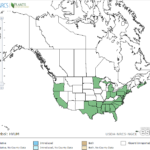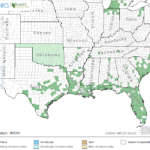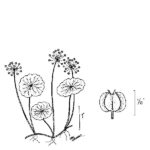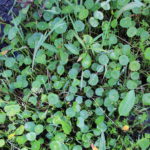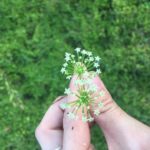Hydrocotyle umbellata
USDA, NRCS. 2018. The PLANTS Database (http://plants.usda.gov, 28 March 2018). National Plant Data Team, Greensboro, NC 27401-4901 USA.
Illustration: USDA-NRCS PLANTS Database / USDA NRCS. Wetland flora: Field office illustrated guide to plant species. USDA Natural Resources Conservation Service.
What is Manyflower Pennywort?
Physical Characteristics
Leaves:
- Disk- or shield-shaped
- Up to 3 inches in diameter
- Has round-toothed edge
- Leaf stalks mostly slender
- Leaf stalks up to 16 inches long (usually much shorter)
Flowers:
Fruit:
- Disk- or elliptical shaped
- 0.05-0.08 inches long
- 0.08-0.13 inches wide
Stem:
- Slender
- Floating or creeping
Where Does it Grow?
Manyflower pennywort can be found in swampy areas in shallow water, the edges of ponds, ditches and in marshy ground.
Pros and Cons of Manyflower Pennywort
The seeds of pennywort are used occasionally as food by waterfowl. Submerged portions of all aquatic plants provide habitats for many micro and macro invertebrates. These invertebrates in turn are used as food by fish and other wildlife species (e.g. amphibians, reptiles, ducks, etc.). After aquatic plants die, their decomposition by bacteria and fungi provides food (called “detritus”) for many aquatic invertebrates.
